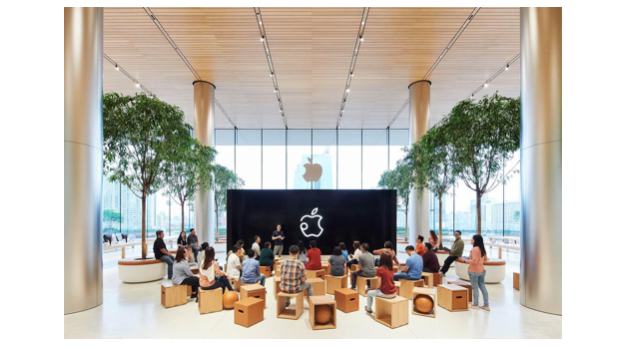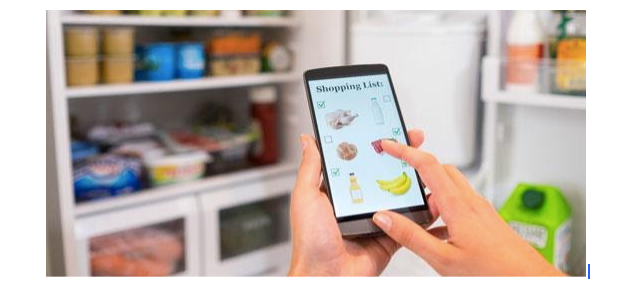Has Covid-19 Ended The Personal Touch Associated With Experiential Retail?
By Scott L Ellis, Retail & Consumer Industry Lead, IBM MEA

Before Covid-19 impacted our lives, one of the primary strategies that traditional retailers were taking in order to compete effectively with online retailers and ecommerce giants was to focus on in-store experience, or focusing on what is referred to as Experiential Retail. This term was coined to explain a modern day refocusing on things that were a given in the golden days of retail. Experiential retail focuses on surprising and delighting the shopper on every visit, with something new to discover and a personalized, memorable shopping experience.
A key objective would be to build a loyal devout following of shoppers who see the store as a destination in the community. To achieve this, brands and retailers have undertaken all kinds of experimentation within their stores, with varying degrees of success. Nike incorporates basketball courts in its Soho NYC store, geared toward giving customers a better way to test out the products they might want to buy. Apple’s Dubai stores in Mall of Emirates and Dubai Mall include product demos, group classes and scheduled events, all developed with the intent to build community around the brand.

However, what happens when an unexpected global pandemic surfaces? Well, funny you should ask. With Covid-19, a firm part of our everyday lives for virtually all of 2020, small and global brands alike realized they could not fully control the in-store experience – whether managed by themselves or otherwise – especially where safety guidelines are in flux. Tactile, human, and/or immersive experiences are exactly what people are minimizing their exposure too. This has left mall operators, stores, and brands with expensive problems whether it be their newly unattractive go-to-market strategies, assets or planned investments.
Tomorrow came early for many retailers who had not done enough to exploit the ecommerce opportunities in front of them. Whether they like it or not, ecommerce has become the most important sales channel as it is one that brands can rely on to at least survive 2020. The UAE was already one of the most advanced e-commerce markets in the Middle East and North Africa – according to a joint study by Dubai Economy and Visa – and Covid-19 has now pushed many previous non e-commerce users into the digital revolution.

Many digital retailing laggards have, ultimately and against their will, had to pivot focus to ecommerce, a channel that leverage or support the scarce things they can actually control i.e. a direct to consumer (DTC) model and standardised fulfilment. Retailers and brands are having to improve their supply chains to handle sustained periods of increased ecommerce volumes. IT departments are having to accelerate migration to cloud and openness of standards so to support rapid innovation and change and the partnering with marketplaces and third parties including logistics.
What becomes of the brands with brick-and-mortar locations? In the short term, the owners may be wise to turn these storefronts into small distribution hubs to convert under-utilised and under-visited real estate into revenue-generating opportunities. Items can be either fulfilled from store inventory shipped out directly from the distribution center. Automated technology can help speed up this process even faster without putting a strain on store associates.
If these retailers or brands do not or cannot afford to pivot and do this, others will. However, it’s not all doom and gloom. The only constant in life is change and whilst retailers and brands augment their operating models to effectively and efficiently support the right channel mix, there are ways of working and new technologies that can support them to do so. For example, if we look at the non-customer facing side of retail, the combination of artificial intelligence (AI) and robotics can bring data-driven approaches to supplier quality, merchandising, distribution, logistics, and fulfillment, giving retail leaders the insights necessary to maximize value capture. Instead of reacting to the undeniable external forces and rapid changes in consumer behavior, intelligent automation helps retailers and brands to create opportunities that allow them to operate more proactively.

When it comes to engaging the customer, the Covid-19 pandemic has likely given rise to a new phenomenon wherein many more customers will become reliant on tools like Augmented Reality, Virtual Reality, and mixed reality in order to shop with a level of experiential enjoyment. With augmented reality, people can shop for furnishings and see how they look inside their home. Products like apparel can also be selected and tried on without needing to enter a changing room which other consumers will have used.
Rebuilding retail won’t just be about working back to the pre-2020 status quo, but this does not mean Experiential Retail has died. The future of retail depends largely on retailers’ ability to appreciate new ways of creating great experiences for their customers. They need to prioritize business transformation to appreciate, respond and take advantage of new solutions in order to deliver products and services of value to their customers. All whilst balancing employee health and safety, improving customer experience, and maintaining profitability. No small challenge, but a very exciting and doable one all the same.





